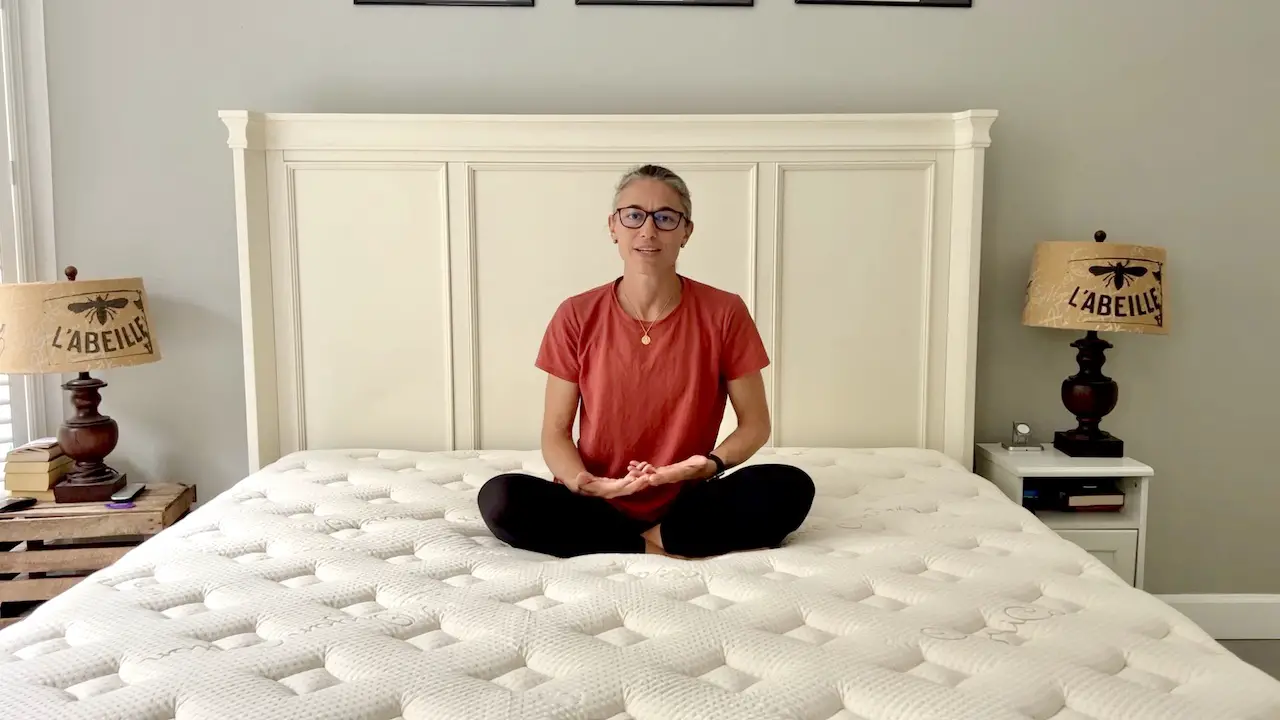HOW TO BUY BED SHEETS
Includes A Guide Per Material
Choosing the right bed sheets can significantly improve your sleep quality and overall comfort. However, as you start shopping for bed sheets, you will find the choices and options overwhelming.
With an unbelievable number of materials, thread counts, and sizes available, buying bed sheets may seem crushing. This guide will help you understand the essential factors to consider and the pros and cons of different bed sheet materials, helping you make the best decision for your personal needs.
If you are looking for inspiration, make sure to consult our list of Best Bed Sheets (updated yearly).
Table of Contents
Why Buying the Right Bed Sheets Matters
Bed sheets are more than just a bedding accessory. They contribute to your sleep environment, affecting your comfort, temperature regulation, and even skin health. Here are some reasons why choosing the right bed sheets is essential:
Comfort: The right material and weave ensure a soft and comfortable feel. Choose from buttery soft sheets to thick and soft sheets for cooler nights.
Temperature Regulation: Certain fabrics help maintain a cool or warm sleeping environment. Switching bed sheets over the seasons can help regulate your body’s temperature to achieve the most restful sleep possible.
Durability: High-quality sheets can last longer, saving you money in the long run, while the initial investment can be significantly higher. High-quality sheets can be used for years, sometimes even becoming softer with every wash. Some materials are even hypoallergenic, saving you washes as they stay cleaner longer.
Health: Hypoallergenic and breathable materials can improve skin and respiratory health, protecting allergic folks against mold, mildew, and dust mites, and helping those with eczema and other skin conditions.
Factors to Consider When You Buy Bed Sheets
Before you start shopping for bed sheets, consider the following factors to narrow down your options and help in your search:
1. Material
Your bed sheet material affects the texture, feel, breathability, and maintenance of your sheets. Common options include cotton, linen, silk, bamboo, and microfiber. Click here to read the pros and cons of each material.
2. Thread Count
Thread count refers to the number of threads woven into one square inch of fabric. While higher thread counts often indicate softer sheets, they aren’t the only indicator of quality and have become rather controversial. Head over to this section to read more about threadcount and why a lower threadcount may mean higher quality.
3. Weave
Different weaves offer varying textures and durability. Popular weaves include percale (crisp and breathable) and sateen (smooth and silky), and really impact the way bed sheets feel and how your body reacts in terms of temperature control.
4. Size
Ensure your sheets match the dimensions of your mattress, including mattress depth, to avoid your sheets popping off as you move at night. Standard sizes include Twin, Full, Queen, King, and California King. At times, some sheets will fit several mattress sizes: Twin / Twin XL, Full / Queen, King / Cal. King.
5. Price
Set a budget to guide your purchase. High-quality sheets can range from $50 to $500, depending on the material and brand.
6. Certifications
Look for certifications like OEKO-TEX® or GOTS, which indicate the sheets are free from harmful chemicals or made from organic materials.
Pros and Cons of Different Bed Sheet Materials
Understanding the benefits and drawbacks of each material can help you choose the best sheets for your needs.
Cotton Bed Sheets
Cotton is one of the most popular materials due to its softness and breathability. We always recommend choosing organic cotton over regular cotton, as the fiber is longer and stronger, making the sheets softer and longer-lasting.
Pros:
Natural and hypoallergenic
Highly breathable, ideal for hot sleepers
Durable with proper care and easy to maintain
Available in various types, such as Egyptian, Pima, and Upland cotton
Cons:
High-quality cotton sheets can be expensive
Prone to wrinkles
May shrink if not pre-shrunk
Linen Bed Sheets
Linen is known for its durability and textured feel. Its unique texture gives it a feel that may not be for everyone, but we have always found linen sheets to become softer with time. We never recommend the cheaper linen sheets, as they tend to pill.
Pros:
Exceptionally breathable, great for warm climates
Durable and gets softer with each wash
Naturally hypoallergenic
Cons:
Expensive compared to other materials
Textured feel may not appeal to everyone
Requires special care to prevent wrinkles
- Cheaper linen sheets can heavily pill and require extra vaccuming
Silk Bed Sheets
Silk offers a luxurious and smooth sleeping experience. While buttery soft, they tend to feel quite cold as you first slip into bed.
Pros:
Extremely soft and luxurious
Naturally hypoallergenic
Excellent for sensitive skin
Cons:
Expensive
Delicate and prone to damage
Requires dry cleaning or gentle washing
Bamboo Bed Sheets
Bamboo sheets are gaining popularity for their eco-friendliness and softness. They are, hands down, our favorites, here at Non-Biased Reviews. We can’t get enough of the softness, coziness, and eco-consciousness they provide and love how easy they are to take care of.
Pros:
Sustainable and eco-friendly
Naturally breathable and moisture-wicking
Resistant to bacteria and allergens
Cons:
Can be expensive
Quality varies between brands
Requires gentle washing
Microfiber Bed Sheets
Microfiber is a synthetic material known for its affordability and durability. Those sheets are often made of polyblends and non-natural fabric blends, which are cheaper alternatives, which can be engineered to be very soft and moisture-wicking, but lack in naturally breathability and are often made of plastic, which can impact hormone production.
Pros:
Budget-friendly
Wrinkle-resistant
Soft and lightweight
Cons:
Less breathable than natural fibers
May trap heat, unsuitable for hot sleepers
Can pill over time
- Potentially hormone disruptive
Blended Fabrics
Blends combine materials like cotton and polyester for enhanced durability and affordability.
Pros:
Affordable
Durable and wrinkle-resistant
Easy to care for
Cons:
Less breathable than 100% natural fibers
May feel less luxurious
- Potentially hormone disruptive
How to Buy Bed Sheets Online
Shopping for bed sheets online offers convenience and a wide variety of options. Here are some tips for a successful purchase:
Read Reviews: Customer reviews can provide insights into the feel, quality, and durability of the sheets. Research websites such as Non-Biased Reviews to find specific product reviews, by using the search bar in the upper-right corner.
Check the Return Policy: Ensure you can return or exchange the sheets if they don’t meet your expectations. Purchasing online, you typically benefit from longer at-home sleep trials, allowing you to test the sheets in your home, for usually about 30 nights.
Look for Detailed Descriptions: Check for material, thread count, weave, and certifications in the product description. Websites should be straightforward and transparent about the provenance of their raw materials and production.
Compare Prices: Shop around to find the best deal without compromising quality. Shopping during the different holidays can lead to serious discounts and savings.
Thread Count And Its Controversies
Thread count has long been marketed as a key indicator of sheet quality, but it is not without its controversies and we do not always recommend paying too much attention to thread counts. Very high thread counts are even suspicious and stop being relevant.
Understanding the nuances of thread count can help you make a more informed decision.
What Is Thread Count?
Thread count refers to the number of horizontal and vertical threads woven into one square inch of fabric. For example, a sheet with a thread count of 300 has 150 horizontal and 150 vertical threads per inch.
The Misconception of Higher Thread Counts
While many believe that higher thread counts equate to better quality, this is not always true. Manufacturers sometimes inflate thread counts by twisting multiple fibers into a single thread, artificially increasing the count without improving quality. A true high-quality sheet typically has a thread count between 300 and 500.
When Thread Count Matters
Cotton Sheets: For cotton, a thread count in the range of 200 to 400 is generally sufficient for softness and durability.
Linen and Bamboo: Thread count is less relevant for materials like linen and bamboo, which have different construction methods.
Marketing Gimmicks
Be wary of sheets with thread counts exceeding 800 or 1,000. These often rely on marketing tactics rather than genuine improvements in comfort or durability, and such thread counts become obsolete.
Focus on Other Factors
Instead of solely focusing on thread count, consider other factors like material, weave, and certifications. These elements often play a more significant role in the quality and performance of bed sheets.
How To Buy Bed Sheets - Conclusion
Knowing how to buy bed sheets involves understanding your preferences, budget, and the unique qualities of different materials. Whether you prioritize comfort, durability, or eco-friendliness, there’s a perfect set of sheets for you. By considering the pros and cons of each material and following the tips in this guide, you can create a sleep environment that promotes relaxation and restful nights.
Now that you’re equipped with the knowledge to buy bed sheets, start exploring your options and upgrade your bedding today!
References
- Science Direct. (2024). Bamboo Fibre: A Sustainable Solution For Textile Manufacturing. Retrieved from https://www.sciencedirect.com/science/article/pii/S2773139124000338
- Poveda Textil. (2021). What Is Organic Cotton and What Are Its Benefits. Retrieved from https://povedatextil.com/en/what-is-organic-cotton-and-what-are-its-benefits/
- Stilwell Memorial Hospital. (2020). 9 Surprising Health and Wellness Benefits of Linen. Retrieved from https://stilwellmemorial.com/sleeping/9-surprising-health-and-wellness-benefits-of-linen/
FAQ
Most frequent questions and answers
A thread count between 300 and 500 is ideal for most cotton sheets, offering a balance of softness and durability. For materials like linen and bamboo, thread count is less important as they rely on different construction methods.
Look for natural materials like cotton, linen, or bamboo, certifications such as OEKO-TEX® or GOTS, and check customer reviews. Consider the weave, material quality, and manufacturer transparency instead of focusing solely on thread count.
Bamboo sheets are eco-friendly, moisture-wicking, and naturally hypoallergenic, making them great for sensitive skin and hot sleepers. However, high-quality cotton sheets like Egyptian or Pima cotton offer exceptional breathability and durability. The choice depends on your priorities.
Yes, microfiber sheets are less breathable than natural fibers and can trap heat, making them less suitable for hot sleepers. If you tend to sleep warm, consider breathable options like cotton, linen, or bamboo.
With proper care, high-quality sheets can last between 3 to 5 years. Replace your sheets when they show signs of wear, such as thinning fabric, loss of softness, or permanent stains.
What thread count is best for bed sheets?
A thread count between 300 and 500 is ideal for most cotton sheets, offering a balance of softness and durability. For materials like linen and bamboo, thread count is less important as they rely on different construction methods.
How can I tell if bed sheets are good quality?
Look for natural materials like cotton, linen, or bamboo, certifications such as OEKO-TEX® or GOTS, and check customer reviews. Consider the weave, material quality, and manufacturer transparency instead of focusing solely on thread count.
Are bamboo bed sheets better than cotton?
Bamboo sheets are eco-friendly, moisture-wicking, and naturally hypoallergenic, making them great for sensitive skin and hot sleepers. However, high-quality cotton sheets like Egyptian or Pima cotton offer exceptional breathability and durability. The choice depends on your priorities.
Do microfiber sheets sleep hot?
Yes, microfiber sheets are less breathable than natural fibers and can trap heat, making them less suitable for hot sleepers. If you tend to sleep warm, consider breathable options like cotton, linen, or bamboo.
How often should I replace my bed sheets?
With proper care, high-quality sheets can last between 3 to 5 years. Replace your sheets when they show signs of wear, such as thinning fabric, loss of softness, or permanent stains.
Share this deal with a friend!

Laura Georgieff
Laura is a mother of three who did not sleep through the night for the first 5.5 years of her kids' lives. She is passionate about sleep quality and loves sharing her experience and knowledge of all thing bedding! It is her mission to help you make the best decisions when it comes to sleep and help you get the best deal on the market!






